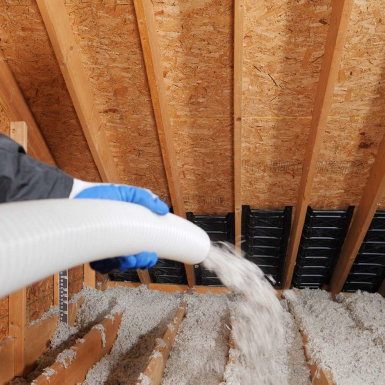Proper insulation of homes and other buildings remote northern communities in Manitoba is essential. Without it, people cannot live safe and comfortable lives. Proper insulation also reduces the cost of heating and can reduce capital costs by extending the life of buildings.
Slag wool is an underutilized insulation in remote communities, having important advantages when compared to the available alternatives:
-
- a higher R-value than fiberglass
- easy to install with local labour
- a mature technology already approved in building codes
- can be made from waste materials available in the region, with local labour
- does not absorb water
- will not support mold growth
- will not slump in walls and lose insulating properties if it gets wet
- will not allow rodents and insects to chew, nest or burrow through it
- fire-proof
- free of foam and plastics
- usually reusable in new buildings after an old building is torn down
The manufacture of slag wool insulation in northern Manitoba would help diversify the northern economy, creating a new mid-sized business and a number of permanent, local northern jobs. The number of jobs created is difficult to predict until we develop a business plan. At this point, an estimate of 10 to 50 new jobs seems reasonable.
Once the product is manufactured, retrofitting existing buildings and homes with slag wool will also create jobs in each northern community.
If we start a new business initiative, the product we should start with is loose fill slag wool insulation. This is the easiest to manufacture, and will be of immediate use in improving the R-value of existing homes, as it can be installed directly into the attic spaces of existing homes. Equally important, the major competitor—Rockwool—does not manufacture loose rock wool or slag wool in North America. Starting with this product would enable us to grow a business free of direct competition.
Using slag wool as insulation in construction would improve the quality, safety and durability of the homes and other buildings, exceeding the minimum building code requirements. It could also play a crucial role in building to Net Zero and Passive House standards in remote communities.
Three steps are needed to determine if this idea is viable:
-
- Determining the availability and suitability of raw materials (slag and waste rock) in northern Manitoba.
- Determining processing requirements to turn the raw materials into slag wool and determining if the equipment required for this processing is currently available in northern Manitoba.
- Creating a business plan to determine if the company would be financially viable and the number of jobs that would be created.
This is the introduction to the full document, which is available here.

